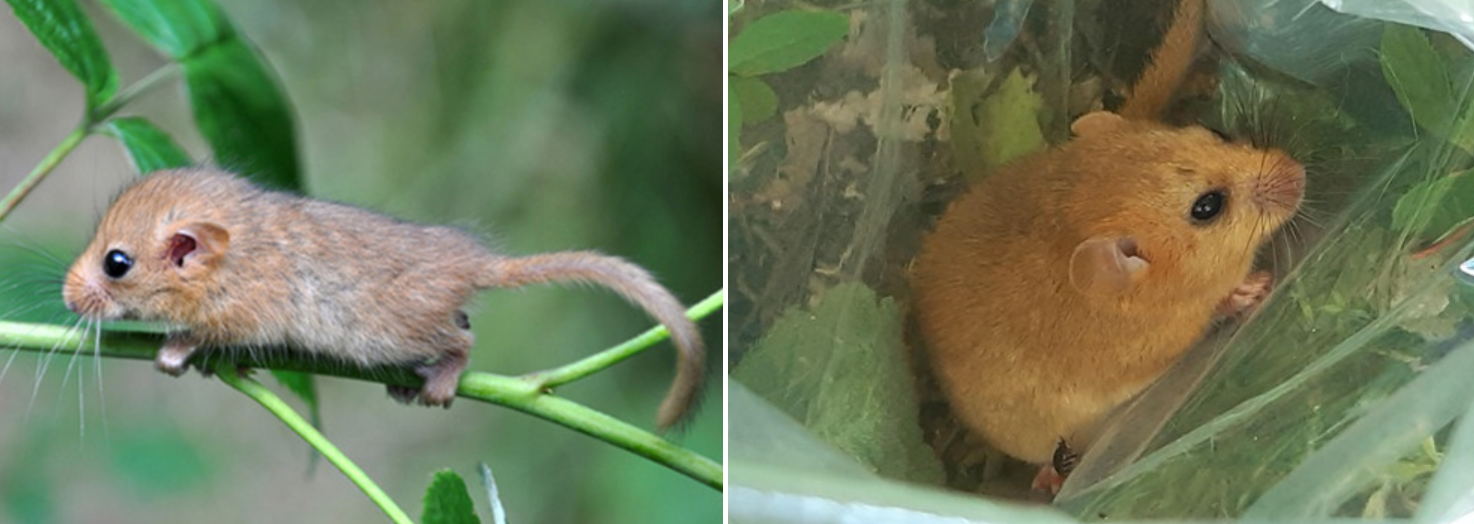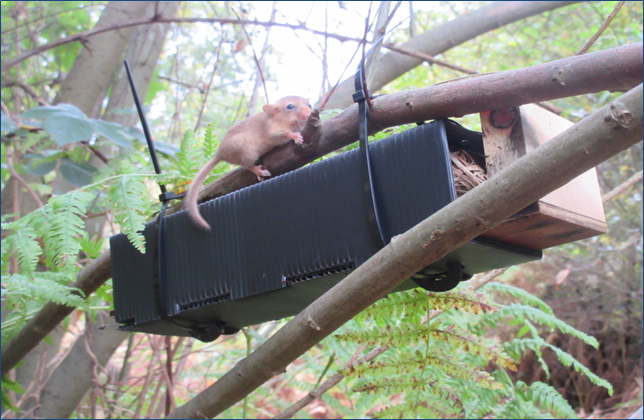M26 Hazel Dormice Surveys

As part of the Road Investment Strategy (RIS2) devised by National Highways, which looks at improving ‘environmental performance’ as an industry; Connect Plus Services is providing an improvement plan to our soft estate to increase our biodiversity net gain units.
This means integrating biodiversity net gain into more of our schemes and increasing the level of net gain units we produce per scheme where possible.
Every habitat has a type (e.g., broadleaved woodland, lowland meadow, bramble scrub) and a condition (good, moderate, poor) as well as a level of importance to local authorities and strategies.
These criteria provide a number of units for each habitat. Net gain units refer to the increase in these units due to the improvements we implement in a scheme.
The M26 project
To facilitate the increase in units, our dedicated environment team designed a large-scale project on the M26 to improve the habitat condition and suitability for protected species and other species of conservation concern. After analysing species records, we found that there are established populations of hazel dormice in the area, hence, dormice became the primary focus of the scheme.
We first needed to determine the habitat types and conditions along the M26 before we could survey for dormice and design biodiversity improvements. We assessed every habitat between Junction 1 and Junction 2a on both sides of the carriageway. We used the UK Habitat Classification System to determine the habitat types and a condition score system to determine the current quality. This allowed use to identify the best habitats to survey for dormice.

Conducting the survey
We proceeded to set up 400 nest tubes spread across J1-2a with 200 on each side of the carriageway. Nest tubes are effective pieces of equipment designed to determine whether dormice are present or absent on any given site as they provide the perfect environment for a cosy nest. They are made of stiff double walled plastic with a thin piece of plywood inserted inside which blocks off one side of the tube. The tubes were attached using Velcro or wire to large stable branches at eye level to keep them safe from predators below.
We set up all the tubes in March and have then proceeded to check every tube once a month from April to November. We record all our findings onto GIS. To check each tube, we must approach the tube as quietly as possible and fill the open end with a thick cloth to prevent any dormice from escaping. Upon finding dormice inside a tube, we must determine the weight, age, and sex of each.
We first place the tube into a large plastic bag and open it up to encourage any dormice inside to make themselves known. If we find baby dormice (also known as ‘pinkies’), we will count how many there are in the nest but then put the tube back immediately as they are too fragile to handle. For adults and juveniles, we will pick them up and separate them into small bags to be weighed. We will also check their genitalia to identify their gender as well.
The weight will give us an indication of the age and health of each individual but there are other clues such as the hazel colour and thickness of the tail which are more prominent in adults. Dormice go through four main life stages as indicated in the photos below. Pinkies are aged 0 – 6 days and typically weigh 2g. Grey eyes closed are aged 6 – 18 days and weigh up to 4g. Juveniles are aged 18 – 42 days and weigh up to 8g. Adults can live 2-5 years and weigh 20g on average, which can increase up to 40g in preparation for hibernation.
It is important to be careful when checking nests as dormice enter a torpid state when sleeping. When they are in this state, they can take a while to wake up and react to what’s happening around them, making them vulnerable to predators. Therefore, when setting up the tubes we must make sure they are secured in place and a good height above ground. This is also the state they are in during hibernation as it conserves energy.
We also record any unoccupied dormouse nests found as well as any that we see leaving a tube before we get a chance to check it.

The Impact
After completing surveys from April to September, we have managed to record a total of 62 dormice on the Kent bound track and 24 on the London bound track. October and November data is still yet to be compiled. We also managed to record dormice in all life stages which indicates a healthy population that is successfully breeding. The Kent bound track especially had a diverse age range across most of the survey months meaning that there is an abundance of food and lack of predators that has allowed the population to become well established. We will continue to monitor this site on a less regular basis to provide us an update to the population size and distribution.
We will aim to improve all habitats along the M26 to benefit dormice, as well as pollinators and other protected species. Some ideas include planting a secondary canopy in woodland and sowing a species rich wildflower mix on the grassland plots.

Social Value
Delivering social value is fundamental to the prosperity of local communities. CPS strives to be a ‘good citizen’ of the communities in which we operate, and we have made it our mission to work collaboratively from the grass roots up.
As our business grows, so does our focus on the environment. We have a duty to the generations to come, to preserve an environment we are proud of. We are committed to working in a sustainable way, alongside our in-house experts, to ensure we are always sympathetic to our surroundings and are protecting local habitats.
Read more about our dedicated focus on the environment and our communities here.
See our full list of vacancies, job descriptions and apply online here.
---
Notes to Editors
About Connect Plus and Connect Plus Services
- Over 10 years ago, Highways England awarded Connect Plus the contract to operate and manage the M25 and its key arterial link roads.
- Connect Plus is a consortium that includes Edge Orbital Holdings Ltd, Balfour Beatty and Egis Road Operation UK - a unique partnership with a collective strength in highways maintenance and management.
- Connect Plus Services (CPS), is Connect Plus’ specialist and strategic supply chain partner responsible for operations and maintenance, bringing together the collective strength and expertise of its parent companies, Balfour Beatty, Atkins and Egis Road Operation UK.
- With a workforce of around 600 people, based at seven locations around the network, CPS carries out routine maintenance, and whole-life management of thousands of M25 assets. CPS manages the operation of the network 24 hours a day, 365 days a year, including a severe weather season maintenance programme.
- Over the past 10 years, collectively we’ve delivered over £1.4bn worth of road improvements and junction enhancements, and we’re continually exploring new and innovative ways to deliver safer, more reliable journeys for our customers. Together, we’re passionate about delivering the long-term needs of the M25 and improving the driving experience for all our customers.
- For further information please visit https://www.connectplusm25.co.uk/ or follow us at https://twitter.com/cpservices_m25
